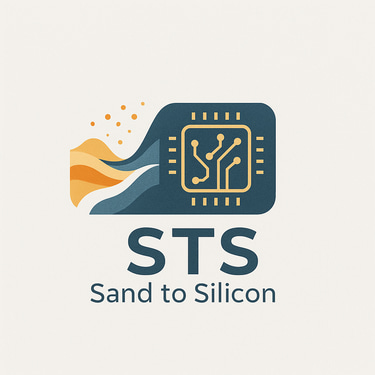The Semiconductor Supply Chain: From Customer Specifications to Final Products
In today’s interconnected digital world, semiconductors are the backbone of countless industries, powering everything from smartphones to electric vehicles. But what does it really take for that tiny chip to make its way into a finished product? Let’s walk through the critical steps of the semiconductor supply chain, highlighting how value is created at every stage.
1. Customer Specification
Every supply chain journey begins with the customer. OEMs (Original Equipment Manufacturers) or system integrators define the requirements based on market needs—performance, power, features, and compliance. These specifications guide every downstream process. Key questions at this stage include:
What will the chip do?
What are the cost and reliability targets?
What standards must it meet (automotive, industrial, etc.)?
Early collaboration between customers and semiconductor companies is crucial to align expectations and timelines.
2. Design & Verification
With the requirements in hand, engineers dive into design. This step involves:
Architecture definition: Selecting the right technology node, IP blocks, and functionalities.
Schematic and layout design: Creating digital and analog blueprints.
Verification: Rigorous simulation and validation ensure the chip will behave as intended. Design for testability (DFT) is also included to ease later manufacturing steps.
Errors caught here are far cheaper to fix than those discovered in silicon!
3. Semiconductor Foundry (Fabrication)
Once the design is verified, it’s sent to the foundry. Here, the chip is physically manufactured using advanced lithography and process technologies. Foundries like TSMC, Samsung, and Intel leverage multi-billion-dollar fabs to:
Deposit and pattern layers of materials on silicon wafers.
Create millions (or billions) of tiny transistors per chip.
This stage demands precision, innovation, and robust supply of raw materials (wafers, chemicals, gases).
4. Assembly, Packaging, and Test
After fabrication, the wafer is diced into individual chips, which then undergo:
Assembly: Chips are mounted onto packages that provide power and signal connections.
Packaging: Packages protect chips from physical and environmental harm, and enable connectivity with the end device.
Testing: Every chip is tested for electrical performance, speed, and reliability. Only those passing strict criteria move forward.
This is where yield loss can occur—emphasizing the need for quality at every prior stage.
5. Contract Manufacturing
Many OEMs outsource device assembly to Electronic Manufacturing Services (EMS) providers. Here:
Semiconductors and other components are integrated onto printed circuit boards (PCBs).
Products are assembled, tested, and prepared for shipment to end-users.
Effective contract manufacturing enables scalability, cost efficiency, and global reach.
6. OEM and Final Products
At the end of this complex journey, OEMs bring together all subassemblies into the final product—be it a smartphone, car, server, or medical device. The success of the entire supply chain is measured here:
Product quality and performance.
Time to market.
Customer satisfaction.
OEMs also provide feedback to the entire chain, enabling continuous improvement.
Conclusion
The semiconductor supply chain is a finely tuned global ecosystem. Each step, from customer specification, design, fabrication, packaging, contract manufacturing, to final assembly, plays a pivotal role in delivering cutting-edge products to market. With rapid advances in AI, IoT, and automotive technology, supply chain agility and collaboration have never been more critical.
